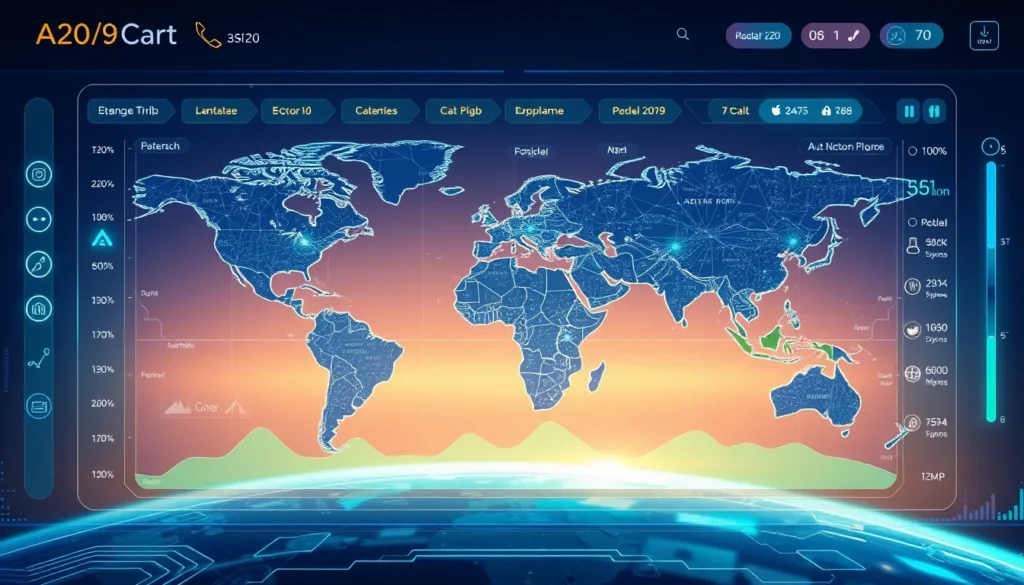Now Reading: Revolutionizing AI Edge Storage & Memory Management: Enhancing Inference and Efficiency
-
01
Revolutionizing AI Edge Storage & Memory Management: Enhancing Inference and Efficiency
Revolutionizing AI Edge Storage & Memory Management: Enhancing Inference and Efficiency

Revolutionizing AI Edge Storage & Memory Management: Enhancing Inference and Efficiency
In today’s rapidly evolving technological landscape, the demand for real-time data processing and efficient memory management is greater than ever. At the forefront of this movement are innovations in AI edge storage and edge computing memory management, technologies that are transforming data processing in critical applications. With the need to overcome storage challenges, lower latency, and enhance energy efficiency, industry specialists are developing radical solutions to ensure that modern AI systems remain agile and responsive.
Understanding the Challenge of Storage Bottlenecks in AI
One of the major hurdles faced in modern AI systems, particularly in edge computing, is the storage bottleneck that slows down data processing. As data volumes increase, the traditional storage architectures used in centralized data centers are often insufficient for managing the demands of real-time AI applications. In particular, the concept of storage bottleneck AI underscores the urgency to adopt innovative methods that can ensure swift data access and processing. For instance, professionals in the sector are placing significant focus on rethinking hardware designs to align with the rapid pace of AI-driven innovations.
Innovative Storage Architectures for Edge Computing
A key strategy to overcome storage limitations is the development of innovative storage architectures for edge computing. This approach involves reengineering memory architectures to handle the unique demands of decentralized systems. By integrating modern high-speed memory components with custom-tailored processors, engineers can significantly reduce data latency and enhance overall system performance.
- Reduced latency for real-time applications
- Improved data throughput during peak operations
- Enhanced scalability in IoT and autonomous systems
- Robust performance even under energy constraints
This paradigm shift not only addresses the existing challenges associated with storage bottlenecks but also sets the stage for future advancements in edge computing. As research continues to progress, we can expect storage solutions to become more efficient, further advancing the field of AI edge storage.
Optimizing Inference Performance with Edge Computing Memory Management
Edge computing memory management plays a pivotal role in improving inference performance in AI systems. In applications where immediate decision-making is paramount, such as in autonomous vehicles or real-time monitoring systems, the speed at which data is accessed and processed is crucial. Enhanced memory management techniques allow for better organization of data, leading to faster inference times. This not only bolsters the overall performance of AI but also contributes to the reliability and safety of critical systems.
Furthermore, by integrating secondary strategies such as storage bottleneck AI analysis, engineers ensure that memory resources are used optimally. In addition, real-time AI data processing is being revolutionized due to the synergistic effect of optimized hardware and refined software algorithms. The combined result is a dramatic reduction in processing delays, making these systems more effective under varying workloads.
Enhancing Energy Efficiency in Edge AI Devices
One of the innovative long-tail approaches embedded in these advancements is enhancing energy efficiency in edge AI devices. Energy management is paramount, especially for devices operating in remote or resource-constrained environments. Techniques to optimize power usage not only prolong device life but also reduce operational costs.
To achieve these goals, engineers are focusing on:
- Employing power-saving modes in high-speed memory components.
- Using custom-tailored processors designed to manage energy loads effectively.
- Developing algorithms that balance performance with energy consumption.
These steps, coupled with improvements in AI edge storage, ensure that even under high data throughput conditions, systems remain energy-efficient. Optimizing the power consumption without compromising performance is a clear win for industries ranging from healthcare to transportation.
Custom-Tailored Processors for High-Speed Memory Integration
Another cornerstone of this technological revolution is the development of custom-tailored processors specifically engineered for high-speed memory integration. These advanced processors are designed to work in tandem with next-generation storage systems, ensuring a seamless flow of data even in highly demanding scenarios. By finetuning processor capabilities to the needs of edge computing, these devices manage to offer lower latency, higher throughput, and improved energy efficiency.
Manufacturers are now exploring collaborative frameworks where processor design and memory integration are considered as a unified system. This approach not only enhances real-time AI data processing but also significantly improves the inference performance edge computing environments demand.
Looking Ahead: The Future of AI Edge Storage and Memory Management
The advancements in AI edge storage and edge computing memory management are setting new benchmarks in the tech industry. As the landscape continues to evolve, future innovations promise even more efficient, scalable, and robust solutions. With emerging research in innovative storage architectures for edge computing and strategies to enhance energy efficiency in edge AI devices, the potential for groundbreaking improvements in AI systems is immense.
In conclusion, the progress in AI edge storage and edge computing memory management is not just a response to current technical challenges; it is a visionary leap towards a more efficient and agile future. These advancements are essential for meeting the rapidly rising demands of modern AI applications. As new technologies are validated and adopted, the benefits will resonate across numerous sectors, driving greater performance across healthcare, transportation, smart cities, and more.
With a clear focus on reducing latency, boosting real-time data processing capabilities, and ensuring energy-efficient operations, the innovations in this field are a definitive game-changer. Stakeholders in the tech industry are encouraged to stay informed about these developments, as they hold the key to unlocking next-level performance in AI and edge computing ecosystems.
For additional insights, visit the IEEE official website and explore related research on emerging AI technologies. The future of edge computing is here, and it promises to transform our world by making AI systems more efficient, intelligent, and responsive.

























